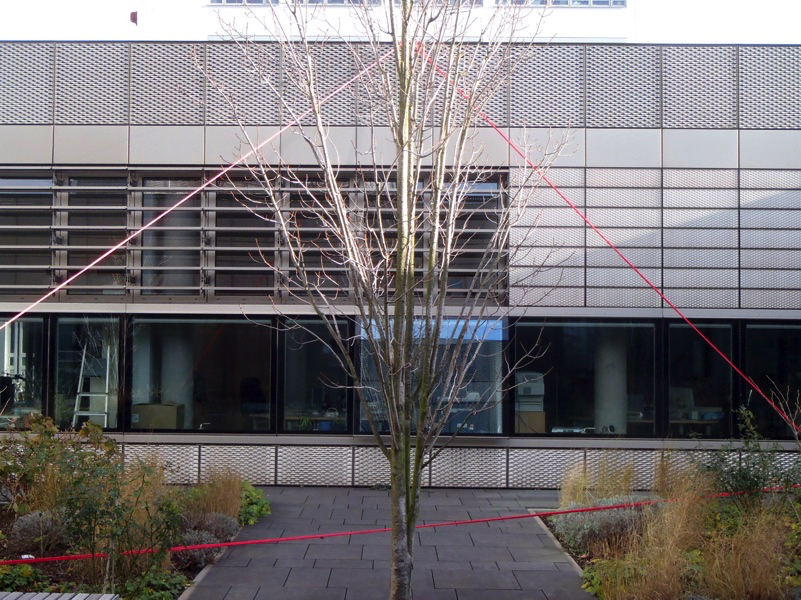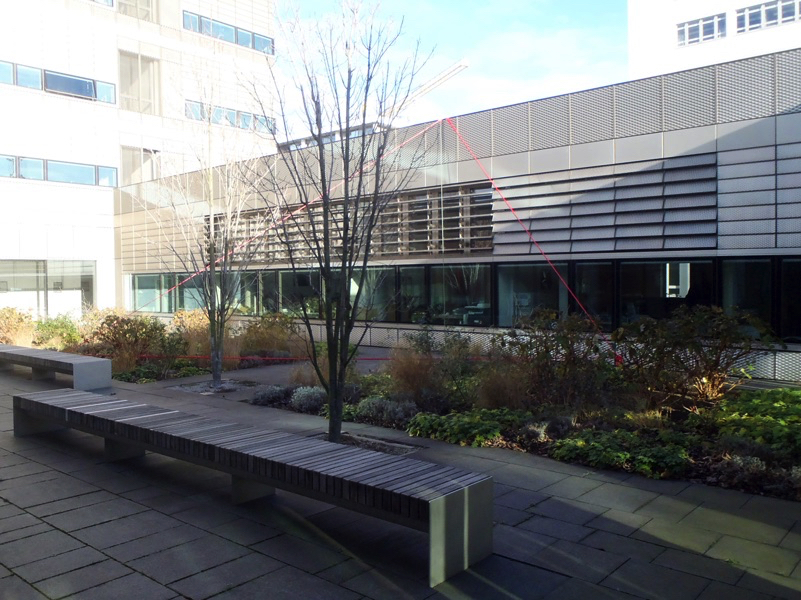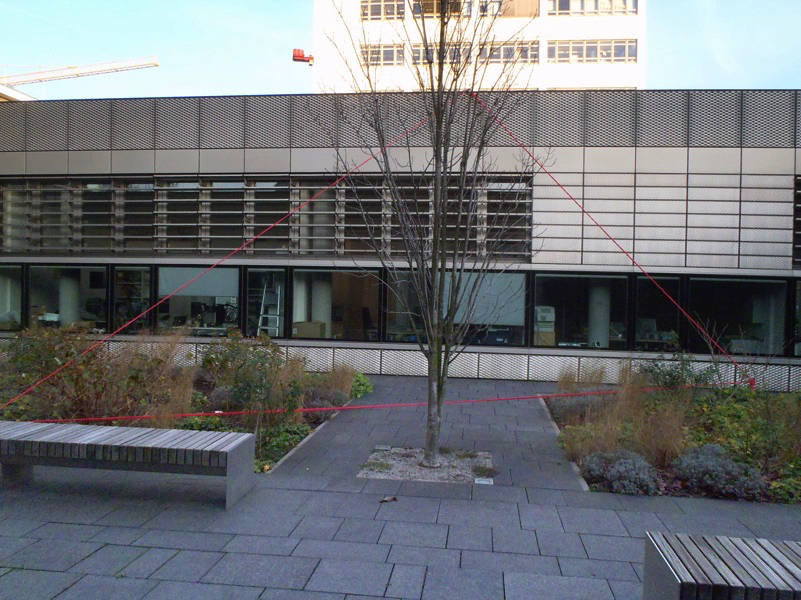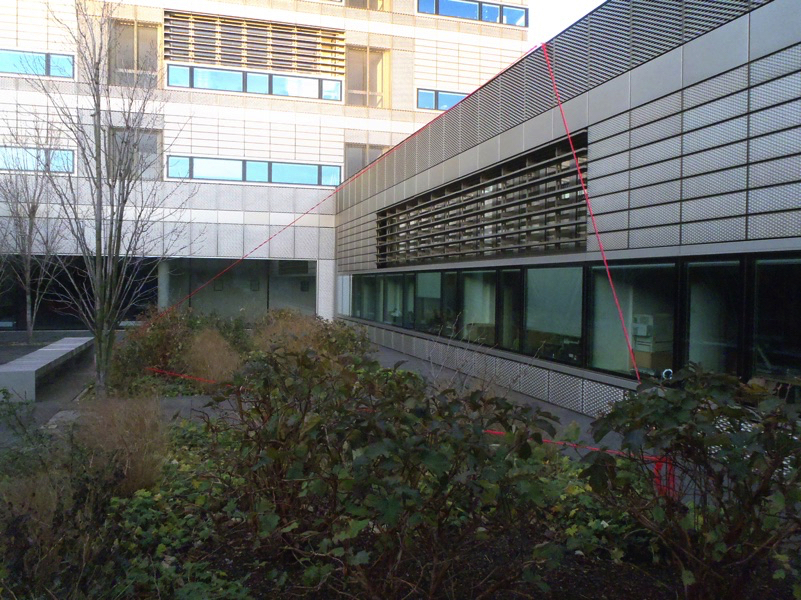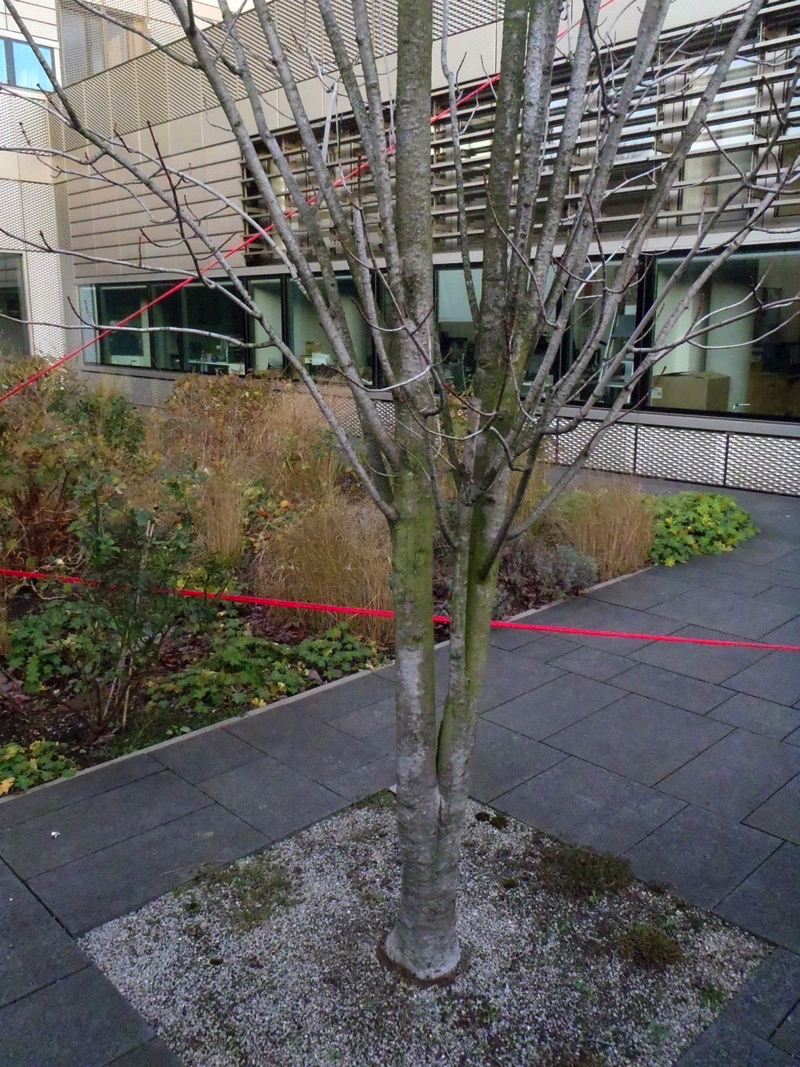
The work was developed in the context of an experimental BioArts project introducing artists to Synthetic Biology methodologies (uses standardized building blocks to manufacture organisms with new characteristics). The project took place in the Heidelberger Life Science Lab, German Cancer Research Center (DKFZ), Heidelberg, German.



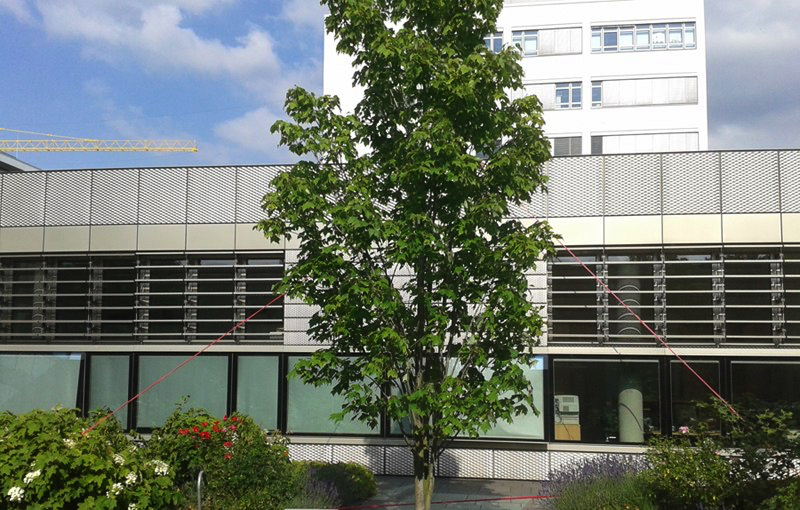
from Alexandra Waligorski’s text: Not Invented by Nature: The Absent Laboratory.
(…)
With his work Clinamen, the Portuguese artist Miguel Santos realised a site-specific installation. A red triangle of nylon rope spans the inner courtyard of the BioQuant building by which the artist highlights the exterior of the laboratory, the architecture that encompasses and houses the laboratory wing of the institution. Through his minimal implementation, Santos emphasises the material, built context of the facility in which the scientists reside. In choosing the courtyard as the place in which to realise this, he marks out a space of the research institution in which nature is designated in its most generally understood form. Santos selected a clear contrary image of the garden as a contrast to the abstract nature which is altered, copied and analysed in the laboratory, a nature of a very basic level whose functionality is recreated and replicated. (1)
The sketches of the artist already make reference to the centre of the installation that encircles a tree growing within the courtyard like a frame. The red synthetic rope delineates a flat plane, which two recessed rectangular plating beds link to the connecting walls of the interior courtyard. However, in no way does it serve up invocations of the romantic image of nature, for after all the courtyard of BioQuant is a thoroughly composed place, designed as part of the complete facility. In this sense the triangular rope installation can be read through its expansion in space as fabricating a pronounced connection between the garden and the building, and in its colouration a relationship between the exterior spaces and the interior. The red colour transverses the interior of the building like a leitmotif and marks all of those places intended to be transitional, connective or communicative spaces: staircases, coffee lounges and sitting areas. By understanding the title of the work as being programmatic, one finds further reflections on the nature of science. Miguel Santos introduces a developed layer of interpretation in referencing the concept of the clinamen, a term coined by the respectively Greek and Roman philosophers, Epicurus and Lucretius. Being an element of chance within a determined framework, the clinamen stands for the chaos within a system, through which creative processes are first enabled to take place. For Epicurus and Lucretius it concerned a very small deviation that brought parallel-descending atoms into collision and simultaneously into merger, and which leads one, despite the existence of natural laws, to make no forecasts about the vicissitude of the universe. In the contemporary reading of the French philosopher Michel Serres, the clinamen is the logic of non-linear dynamics avant la lettre.
At a higher level, the paradoxical nature of the clinamen stands for the productivity of the turbulence, disorders and chances inherent in all scientific processes, which nevertheless stands as somewhat of a contradiction to the maxim of measurability and replicability of laboratory experiments. For the American literary scholar Harold Bloom, the concept of the clinamen is found in poetical-revisionist deviation from original texts. He describes it as the movement of a poet who detaches and removes himself from the text of a predecessor so as to expurgate this work through his own intervention. (2) This interpretation of the Epicurean term also seems evocative against the background of the place where Miguel Santos situated his installation. They are the diverse practices of domination over nature which science has developed over the course of the centuries, which have not merely led to the understanding of, and control over, nature, but are in fact also motors for the multiple attempts to optimise this.
(...)
------------------------------------------
(1)- The garden metaphor in Santos‘ work should in no way be over-streched, nevertheless it seems interesting to relate that the image of the garden is an unquestionable icon for the beginnings of genetic and synthetic biology. Firstly, the reference calls up the pea garden of Gregor Mendel in Brno Abbey, and also that of the chemical garden of Stéphane Leducs, which he laid out in the published title La Biologie Synthétique.
(2) - cf.: Harold Bloom: The Anxiety of Influence: a Theory of Poetry, Oxford/New York: 1973.
